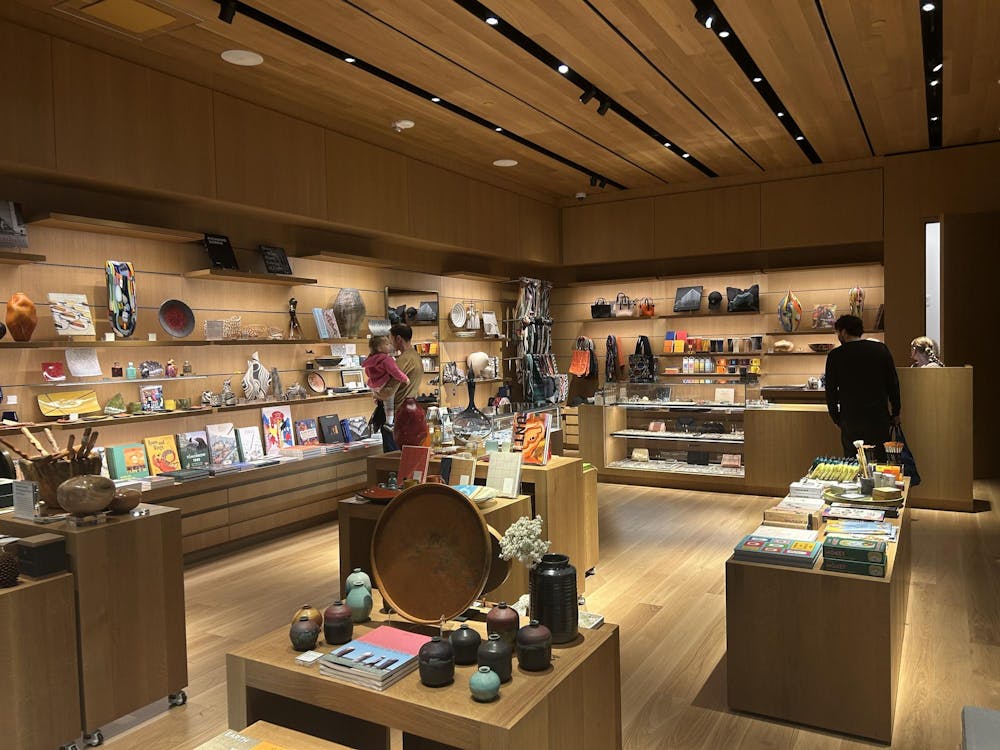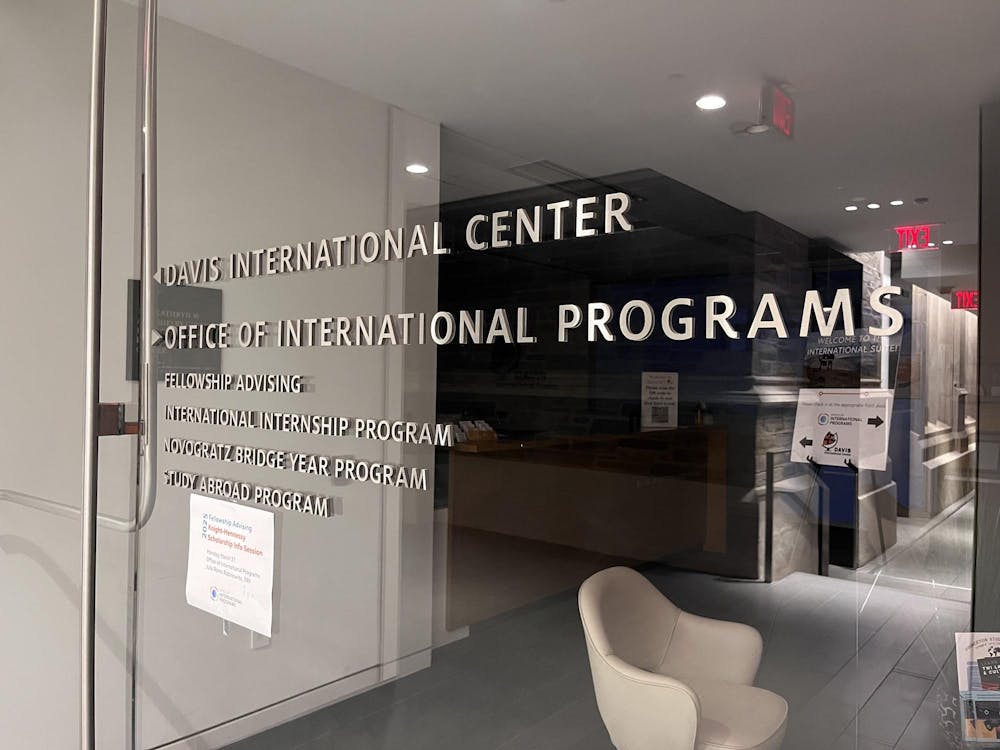Last week, our very own art museum had a grand opening on Halloween, just two weeks after the infamous robbery of an estimated $102 million in jewels at the Louvre. While hopefully the University won’t face any upcoming robberies, the museum’s gift shop provides alternative options to those who want to leave the galleries with their own work of art — granted that you pay for it.
Past the welcome desk on the first floor, the gift shop doesn’t initially stand out in a striking way. With its open floor concept, floor-to-ceiling wooden walls, and built-in glass shelves, the shop blends in with the rest of the museum’s aesthetic. Overhead lighting is soft, and the sales counter could miss a passerby’s eye.
Unlike gift shops littered with repetitive postcards or plastic charms, the museum gift shop provides offerings beyond the traditional souvenir. Matching wooden tables hold works dedicated to a specific artist’s work, ranging from ceramics to glass vases to handmade jewelry. Multiple glass cases are filled with collections of handmade jewelry, ranging from $65 for wooden charms to $465 for metal necklaces. There are also a wide range of earrings handcrafted by a variety of artists. Nancy Troske’s collection of gold and mixed metal pieces are a highlight, mimicking the aesthetic of both Greek gold coins and more abstract designs.
The price tags and labels are hidden and strategically placed to not catch your attention. For a gift shop, it doesn’t really emphasize the second word. Information on the artists’ names and media are displayed prominently. Some tables are even accompanied by information about the artists’ inspiration for the piece or the process that led to its creation. This setup seamlessly mimics the exhibits just beyond its own walls. Yet, unlike in the galleries, you can walk away with the pieces in the shop.
Of course, purchasing handcrafted artworks comes with a price tag. The floor is mostly taken up by sculpted or crafted works. In the back corner hangs an assortment of wool and cashmere scarves consisting of both solid colors and geometric patterns. In the same corner, wool handbags displayed in blacks to browns sit on a shelf — some priced at $145.
The gift shop does not seem to be catered to us students. There is no doubt that the items, especially the fabric pieces, are well-made; however, on a student budget, I wouldn’t consider them worth purchasing. If you really want to leave the store with a keepsake, I might recommend taking a look at the wall full of decorative cards. However, considering that even the cardstock designs come at a steep $23.95 price tag, I would more confidently suggest channeling your own crafting skills through a YouTube tutorial.
Other display tables are littered with small ceramic vases glazed with turquoise, cream, and burgundy hues. Created by Ceramic Artist Max Mustardo, each small vase is priced at $78. If you don’t feel like spending $78 on a small ceramic, the good news is you can actually spend $2,499 on an even bigger ceramic pot. On the same table are related books like “Toshiko Takaezu: The Earth in Bloom,” priced at $100. However, I think the designs would look better in your future minimalist New York City luxury apartment, not a small shared dorm.
Another highlighted artist is Julia Swyers, a New York-based woodworker. Playing with contrasting wood types for her jars, the smooth and minimal designs stack neatly together on the table. There is also a small glass container filled with wooden spinning tops made from a tree that once stood on the site where the museum now stands.

While the gift shop offers more artisan options than the average gift shop, it certainly comes at a cost that isn’t feasible for most students.
Amanda Hugas is a member of the Class of 2027 and a senior writer for The Prospect. She can be reached by her email at ah0942[at]princeton.edu.
Please send any corrections to corrections[at]dailyprincetonian.com.









